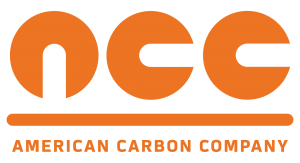One of the most promising ways to add graphene to commercially viable products is through dispersions in fluids. And more specifically, adding graphene to industrial protective coatings and lubricants. Due to the nano sized particles and the advantageous conductive and friction qualities of graphene, it is an ideal additive to enhance the capabilities of fluids. Additionally, relatively small fractional additions by weight can have a significant impact on the properties of the base fluid.
American Carbon has made dispersion technology one of our prime focuses in graphene development. Creating a colloidal solution with a solid that stays dispersed in the fluid without quickly precipitating is always a challenge – no matter how small the solid particles are. Over time, solid precipitate out of the liquid and settle on the bottom of the storage container. Creating a product with an exceptional shelf life and easily redispersed is paramount to successful graphene applications in fluids.
American Carbon already markets a 2-part heavy duty epoxy for pipeline and other steel infrastructure applications that is a suitable and highly beneficial alternative to current standard coatings. Please contact us for more information on this coating which is made to order to each specific project’s specifications.
We expect our marine coating to be market ready in mid 2017. Most marine coatings are typically a multi-part process with a number of different coating types, including epoxy and urethane. Marine coatings need to function in a wide range of environments from hull bottoms on moving vessels to above waterline on vessels to stationary objects such as piers, docks and seawalls. We see the benefits of graphene as an additive to most existing coating – or a replacement to the primary solid including cuprous oxide. Graphene has the potential to reduce friction, reduce effective coating thickness, increase product life and decrease biofouling effects,
As we discussed in a recent blog post (here), a special concern to American Carbon is biofouling or living creatures attaching to a structure. In the Great Lakes region invasive mussels are wreaking havoc on our water supplies, native species and swimming beaches. A coating that these mussels prevents them from attaching will greatly benefit our local waterways and economy. All piers and structures that accumulate barnacles in fact will benefit from a graphene infused coating as well.
